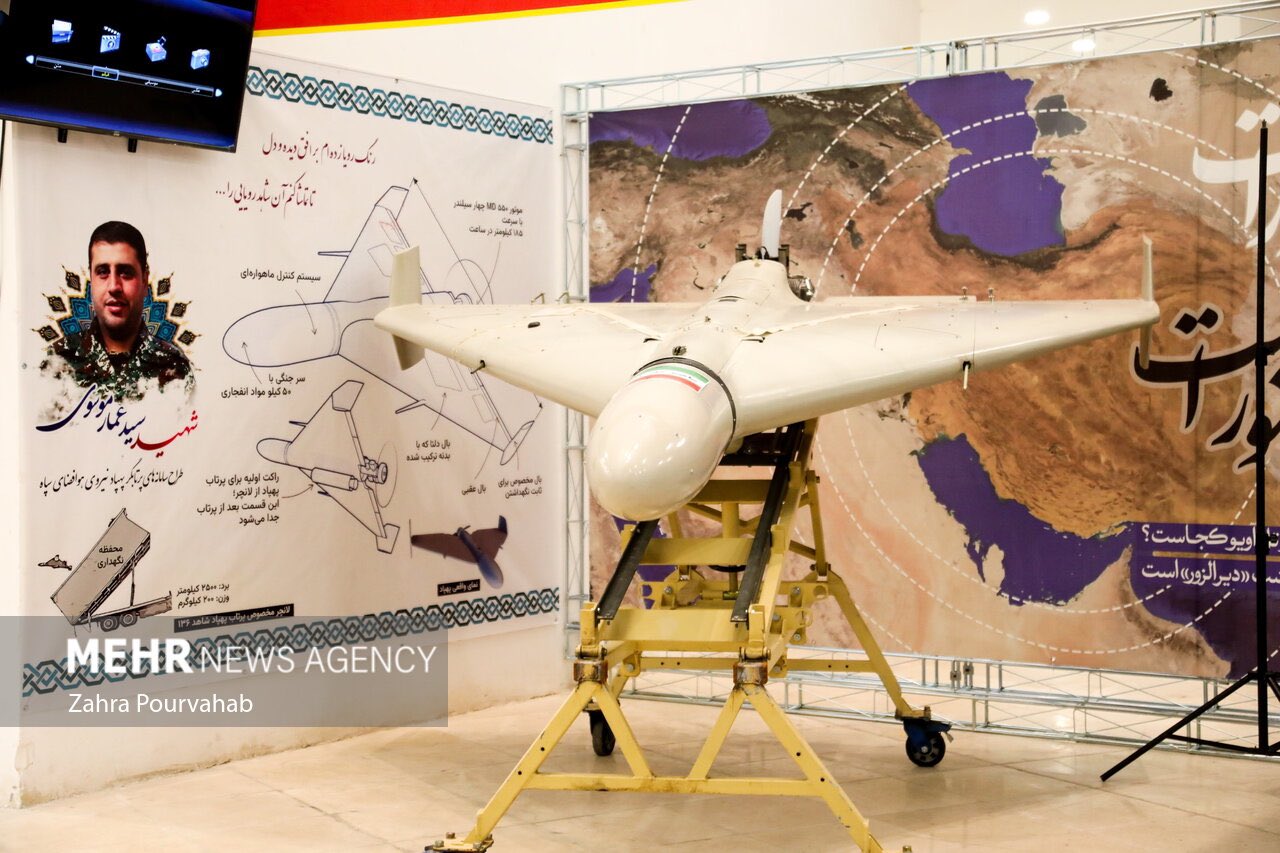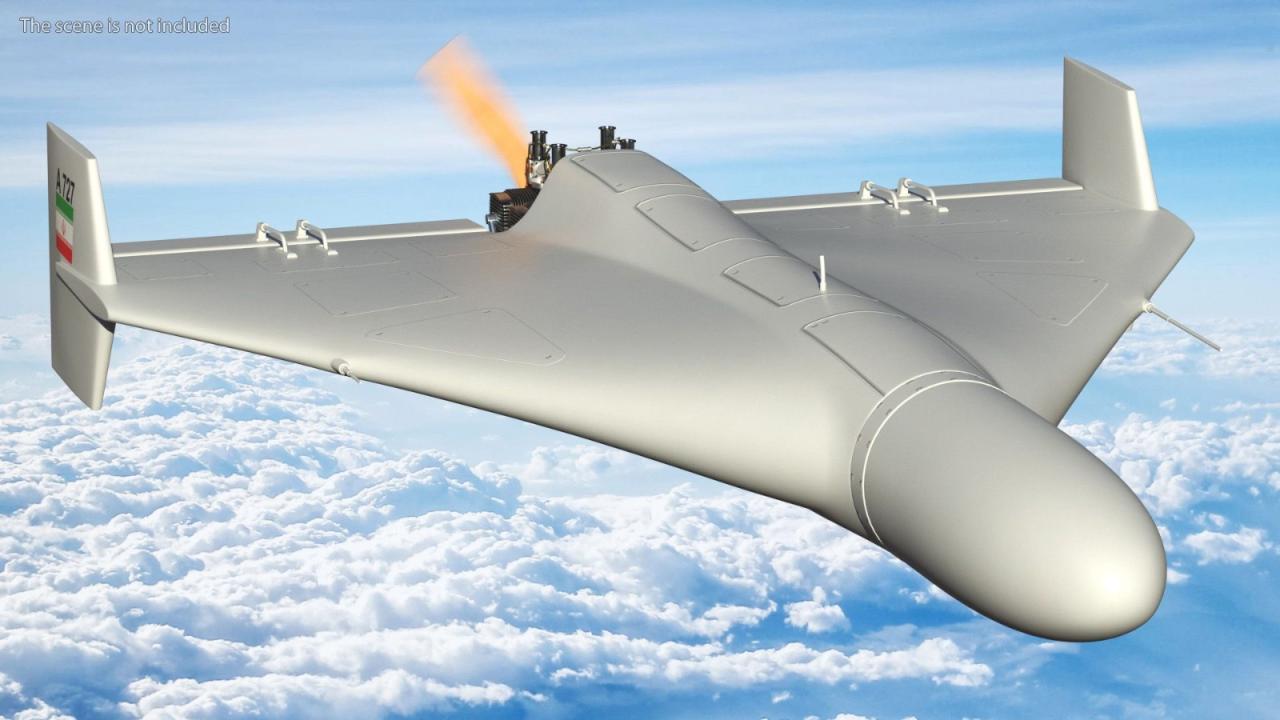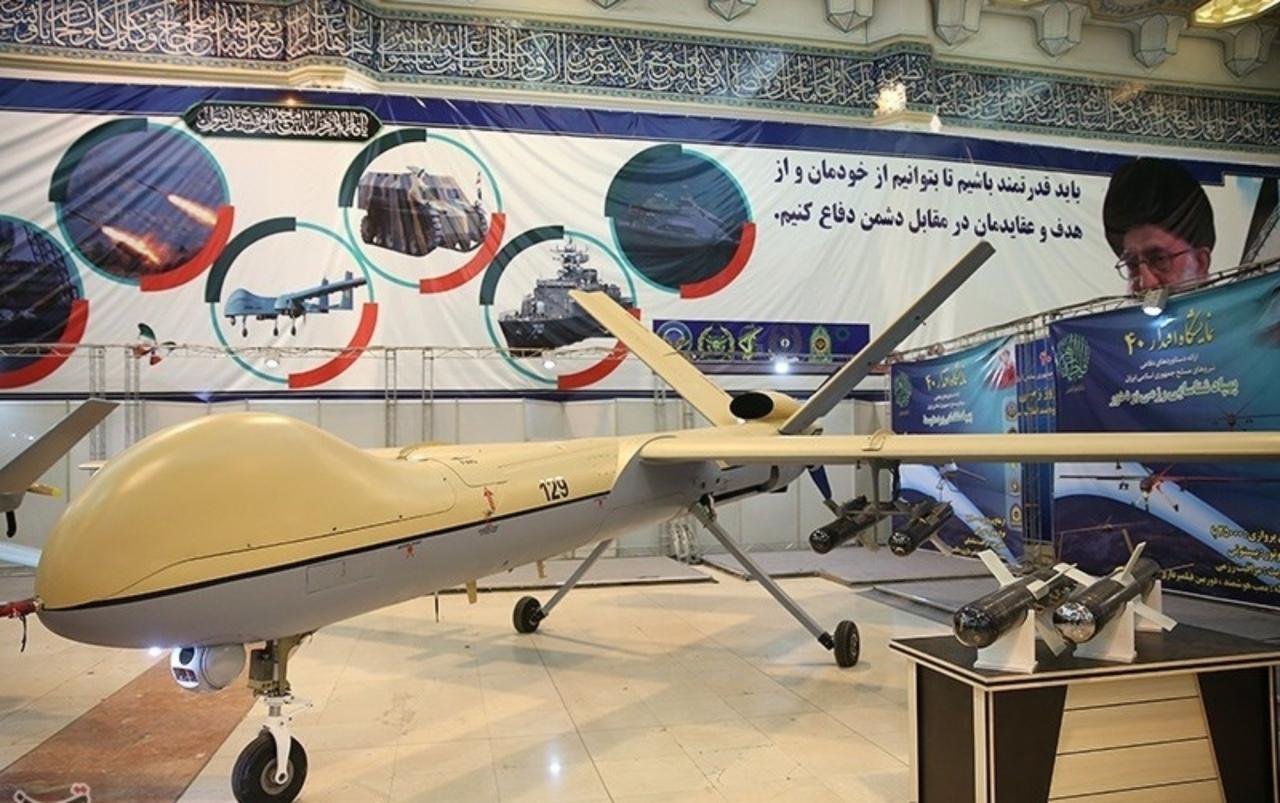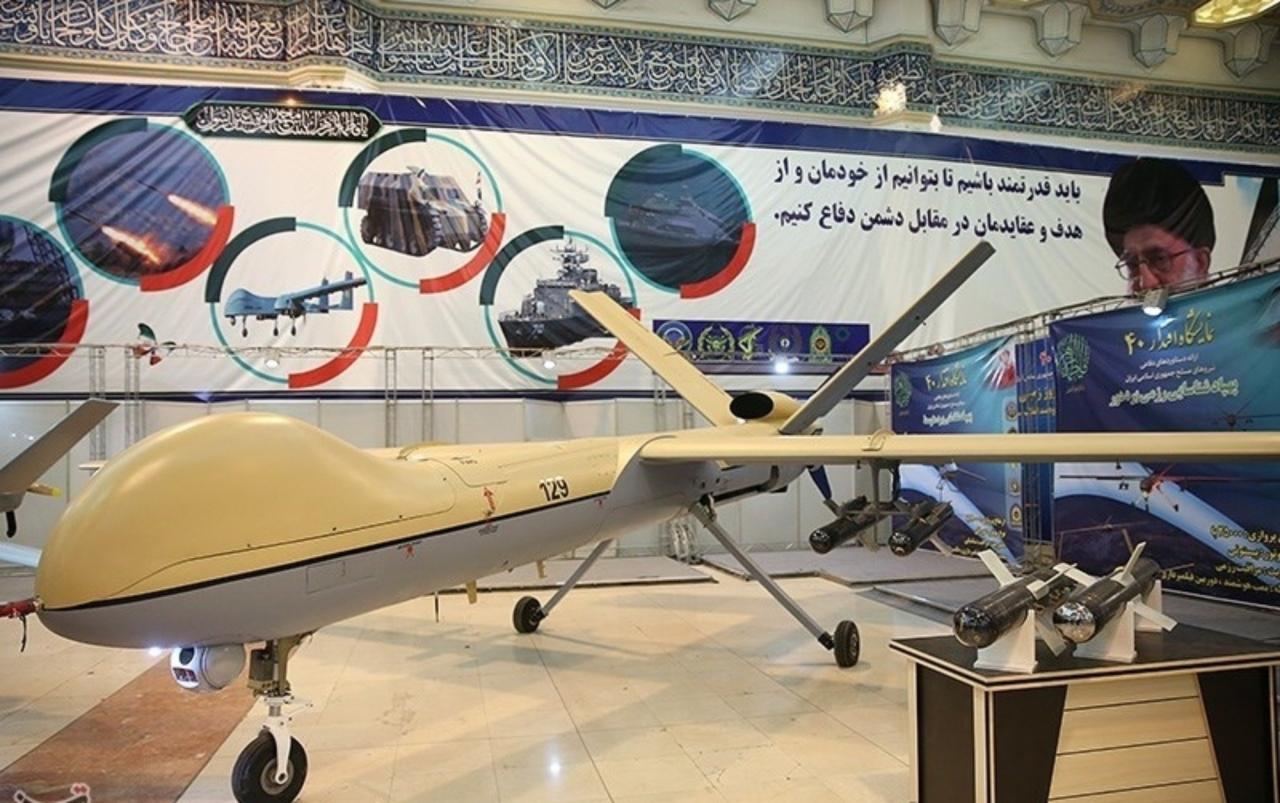Shahed drones, inexpensive and readily available, have significantly impacted modern warfare. Their deployment in various conflicts has raised crucial questions regarding their effectiveness, ethical implications, and the challenges of developing effective countermeasures. This exploration delves into the technical specifications, operational capabilities, manufacturing processes, and geopolitical consequences associated with these unmanned aerial vehicles.
The Shahed drone’s operational range is a crucial factor in its effectiveness. Understanding weather conditions is paramount, and for assessing this in challenging mountainous regions, checking resources like the coquihalla weather camera can provide valuable insight into potential flight challenges. This type of real-time weather data is vital for predicting the Shahed drone’s performance and operational limitations.
From their relatively simple design to their devastating impact on the battlefield, Shahed drones represent a paradigm shift in asymmetric warfare. Understanding their capabilities and limitations is crucial for assessing their current and future roles in global conflicts and the development of appropriate defense strategies.
Shahed Drone Technical Specifications
The Shahed drone, also known as the Shahed-136, is a low-cost, single-use loitering munition. Its relatively simple design and ease of production contribute to its widespread use. Understanding its technical specifications is crucial for assessing its capabilities and developing effective countermeasures.
Physical Dimensions, Weight, and Payload
The Shahed-136 boasts a relatively compact design. While precise dimensions vary slightly depending on the source, it generally measures approximately 3.5 meters in length and has a wingspan of around 2.5 meters. Its weight, including the warhead, is estimated to be around 200 kilograms. The payload capacity is primarily dedicated to a high-explosive warhead, typically weighing around 50 kilograms.
The drone is constructed primarily from composite materials, contributing to its lightweight yet relatively robust structure.
| Specification | Shahed-136 | Similar Drone A | Similar Drone B |
|---|---|---|---|
| Length (m) | ~3.5 | ~4.0 | ~3.0 |
| Wingspan (m) | ~2.5 | ~3.0 | ~2.0 |
| Weight (kg) | ~200 | ~250 | ~150 |
| Payload (kg) | ~50 | ~75 | ~40 |
Propulsion System

The Shahed-136 utilizes a small, relatively low-power internal combustion engine. The exact engine type is not publicly available, but it’s likely a modified version of readily available off-the-shelf components. Fuel capacity is limited, contributing to the drone’s single-use nature. This limits its flight duration to approximately 10-12 hours, depending on environmental conditions and flight profile.
Guidance and Navigation Systems, Shahed drone
The drone’s guidance system relies on a combination of inertial navigation and GPS. While its precision is not as high as some more sophisticated drones, its operational range is substantial, reportedly reaching hundreds of kilometers. The reported accuracy varies, depending on factors such as weather and terrain.
Shahed Drone Operational Capabilities
The Shahed drone’s operational capabilities are largely defined by its design and intended purpose as a loitering munition. Its simplicity allows for relatively easy deployment and operation, making it a cost-effective tool for certain military operations.
Mission Profiles
The Shahed drone is primarily employed for precision strikes against fixed targets. It is launched, typically from a mobile launcher, and navigates to its target using pre-programmed coordinates or real-time guidance. Upon reaching its target, the warhead detonates, causing significant damage. While primarily used for attacks, its relatively long range also allows for reconnaissance missions under specific circumstances.
Launch and Recovery
Launch procedures are straightforward, typically involving a simple catapult or ramp launch from a ground vehicle. Recovery is not applicable, as the drone is designed for single-use. After completing its mission, the drone is destroyed upon impact or detonation of its warhead.
Environmental Resilience
The Shahed drone exhibits a moderate level of resilience to various environmental conditions. It can operate in moderate wind speeds and temperature ranges. However, severe weather conditions, such as heavy rain or strong winds, can significantly impact its flight performance and accuracy.
Shahed Drone Manufacturing and Acquisition
The relatively simple design and manufacturing process of the Shahed drone contribute to its low cost and ease of mass production. This has significant implications for its proliferation and use in various conflicts.
Manufacturers and Suppliers
While precise details about the manufacturers and supply chain are not publicly available, it is understood that Iranian entities are primarily involved in the design, manufacture, and assembly of the Shahed drone. The drone likely utilizes readily available components from various international sources.
Manufacturing Process and Supply Chain
The manufacturing process is believed to be relatively straightforward, involving the assembly of pre-fabricated components. This contributes to the relatively low cost of production and facilitates mass production. The supply chain likely involves both domestic and international sources for various components.
Production Costs and Economic Impact
The estimated cost of producing a single Shahed drone is relatively low, ranging from several thousand to tens of thousands of dollars, depending on the specific components and manufacturing processes involved. This low cost makes it an attractive option for various actors, contributing to its widespread proliferation.
Shahed Drone Deployment and Use
The Shahed drone has been deployed in numerous conflicts and military operations, demonstrating its effectiveness as a low-cost, readily available weapon system. Its impact on modern warfare is significant and warrants careful analysis.
Documented Deployments
- September 2022: Ukraine. Multiple attacks reported targeting civilian infrastructure and military targets.
- October 2022: Ukraine. Large-scale attacks reported across multiple regions.
- November 2022: Ukraine. Continued attacks reported, focusing on energy infrastructure.
- December 2022: Ukraine. Increased use of Shahed drones reported.
- January 2023: Ukraine. Further attacks reported, demonstrating adaptability to countermeasures.
Tactical and Strategic Implications

The Shahed drone’s deployment has significant tactical and strategic implications. Tactically, it provides a relatively inexpensive and effective means of targeting specific locations. Strategically, its widespread use has demonstrated the potential for asymmetric warfare and the challenges posed by readily available, low-cost weapons systems.
Timeline of Significant Events
A detailed timeline of the Shahed drone’s development, deployment, and impact is essential for understanding its evolution and implications. Such a timeline would include key dates related to its first deployment, major attacks, and the development of countermeasures. Specific dates would need to be verified through reputable sources.
Shahed Drone Countermeasures and Defense Strategies
The proliferation of the Shahed drone necessitates the development of effective countermeasures and defense strategies. This requires a multi-faceted approach, combining technological advancements with tactical adaptations.
Hypothetical Defense Strategy
| Phase | Action | Technology | Personnel |
|---|---|---|---|
| Detection | Utilize radar and electronic sensors to detect incoming drones. | Advanced radar systems, electronic warfare sensors. | Trained operators, analysts. |
| Identification | Verify the threat and distinguish Shahed drones from other aerial objects. | AI-powered identification systems, image recognition. | Experienced operators. |
| Neutralization | Employ countermeasures to neutralize the threat. | Electronic warfare, anti-drone systems, kinetic interception. | Trained personnel, rapid response teams. |
| Post-Neutralization | Analyze data, adapt strategies. | Data analytics, intelligence gathering. | Analysts, intelligence officers. |
Effectiveness of Countermeasures
Various countermeasures have been employed against Shahed drones, with varying degrees of success. Electronic warfare techniques can disrupt the drone’s navigation and control systems. Anti-drone systems, such as directed energy weapons and net guns, can physically neutralize the drone. However, the effectiveness of these countermeasures depends on factors such as the drone’s design, environmental conditions, and the sophistication of the countermeasure employed.
Challenges and Limitations

Countering Shahed drone attacks presents significant challenges. The drone’s low cost and relatively simple design make it difficult to effectively neutralize all incoming drones. The large numbers employed in attacks overwhelm existing defense systems. The reliance on readily available components also makes it challenging to predict or effectively disrupt its production and deployment.
The Shahed drone, a relatively inexpensive but effective weapon, has garnered significant attention for its use in recent conflicts. Understanding its capabilities is crucial, especially considering similar drone-related incidents elsewhere. For instance, the recent anxieties surrounding unauthorized drone activity in New Jersey were thankfully resolved, as detailed in this report: drones over new jersey solved. The successful mitigation strategies employed there offer valuable insights into countering the threat posed by drones like the Shahed, potentially informing future defensive measures.
Shahed Drone Impact and Implications
The Shahed drone’s proliferation and use have far-reaching geopolitical implications and humanitarian consequences. Its impact on modern warfare and international relations is undeniable.
Geopolitical Implications
The widespread use of the Shahed drone has shifted the balance of power in certain regions. Its low cost and ease of use make it accessible to various actors, potentially escalating conflicts and destabilizing regional security. The drone’s use has also raised concerns about the proliferation of military technology and the potential for wider adoption by non-state actors.
Humanitarian Consequences
Shahed drone attacks have resulted in significant civilian casualties and infrastructure damage. The relatively imprecise nature of the drone’s targeting, combined with its explosive payload, has caused widespread destruction and suffering. The long-term humanitarian impact of these attacks remains to be fully assessed.
Descriptive Illustration of a Shahed Drone Attack
Imagine a dark night. A low hum, almost imperceptible at first, grows steadily louder. A small, dark object, barely visible against the night sky, streaks across the horizon. Suddenly, a bright flash illuminates the scene, followed by a deafening explosion. The earth trembles, and a plume of smoke and debris rises into the air.
The immediate aftermath is chaos: fires rage, buildings crumble, and the air is thick with the smell of smoke and destruction. The quiet hum of the drone has been replaced by the screams of the injured and the sirens of emergency vehicles.
The proliferation of Shahed drones underscores the evolving landscape of modern warfare, highlighting the need for innovative defense strategies and a renewed focus on international cooperation to mitigate their devastating consequences. While their low cost and ease of use present significant challenges, ongoing technological advancements and international collaboration offer pathways toward mitigating the threats posed by these unmanned aerial systems.
The long-term impact of Shahed drones remains to be seen, but their current influence is undeniable.
General Inquiries
What is the range of a Shahed drone?
The operational range varies depending on the specific model and environmental conditions, but generally falls within a range of several hundred kilometers.
What type of explosives do Shahed drones typically carry?
They usually carry a high-explosive warhead, though the exact type and amount vary.
Are Shahed drones easily detectable?
Their detection depends on various factors, including radar systems, electronic warfare capabilities, and the operator’s skill in evading detection.
How are Shahed drones typically launched?
They are often launched from simple ground-based systems, making them relatively easy to deploy.
